Remarkable Berber Jewelry at The Met
«In the months since returning from my Travel with The Met trip to Morocco last spring, I have been deep in the Museum's storage vaults closely studying the Berber jewelry from Morocco and Algeria. Berbers, who refer to themselves as Amazigh (pl. Imazighen), meaning "free people" or "noble ones," are the indigenous populations of North Africa who have largely converted to Islam. Most of the Berber material in the Islamic collection dates from the 19th and 20th centuries.»

Left: Illustration of a Chleuh dancer from Tiznit by Jean Besancenot, in Costumes of Morocco (Costumes du Maroc, 1942), plate 46. Right: The author holds a similar pair of Moroccan fibulae from The Met collection
Perhaps the most well known form of North African Berber jewelry is the triangular shaped fibula known as tizerais. Worn at the shoulder to affix a garment in place, these objects can be quite large and heavy. French ethnographer and artist Jean Besancenot (1902–1992) traveled to Morocco in the 1930s to photograph and paint the garments and accessories of Berber women, which he published in the book Costumes du Maroc in 1942. Besancenot's photographs and watercolors are important documents for understanding how these Berber jewels were worn. The illustration (above left) shows a dancer from Tiznit, in southern Morocco, wearing the type of large fibula that is present in the Museum's collection (above right; below left).
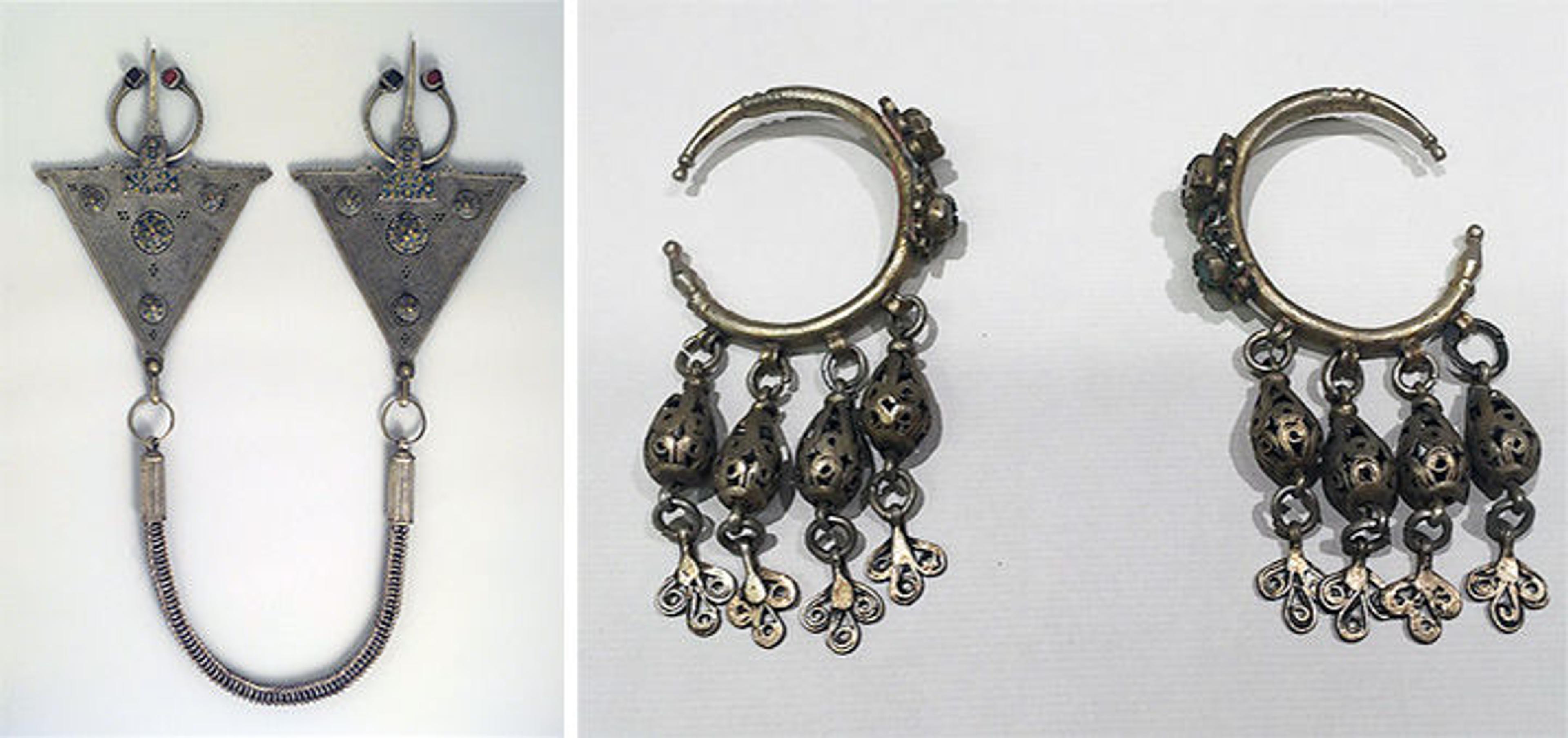
Left: Pair of fibulae (tizerais), 19th–20th century. Morocco. Silver, enameled glass, H. 46 1/2 in. (118 cm). The Metropolitan Museum of Art, New York, Gift of Marguerite McBey, 1981 (1981.5.2). Right: Pair of ear ornaments (tikhrazin or douwwah), 19th–first half of 20th century. Attributed to Morocco. Silver (?) filigree and glass, 3 1/2 x 2 x 1/8 in. (8.9 x 5.1 x .3 cm). The Metropolitan Museum of Art, New York, Bequest of Helen Winslow Durkee Mileham, 1954 (55.111.40 and 55.111.41)
The figure in Besancenot's drawing also wears ear ornaments known as tikhrazin, which, due to their large size, would have been supported by a chain attached to a diadem to alleviate the weight. The Met also has examples of tikhrazin (above right).
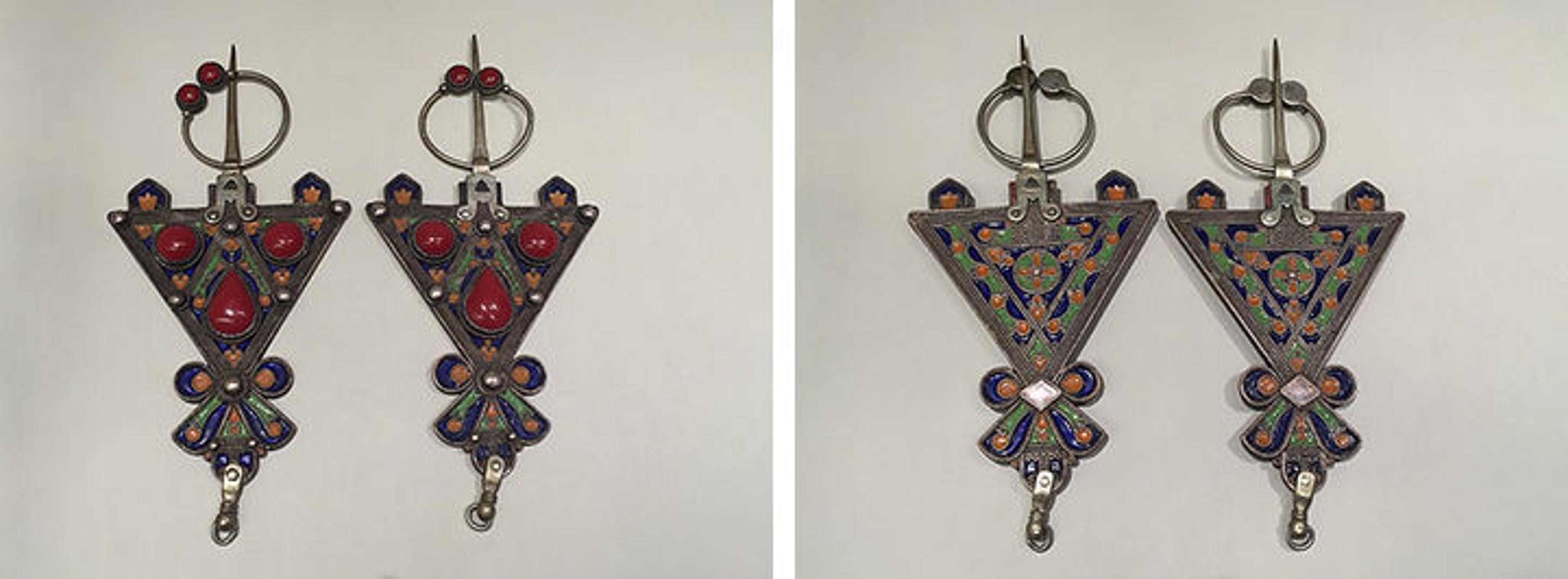
Pair of fibulae (tizerais), first half of 20th century. Left: Front side; Right: Back side. Attributed to Algeria, Kabylie. Silver, enamel, imitation coral, 10 x 4 3/4 in. (25.4 x 12.1 cm). The Metropolitan Museum of Art, New York, Bequest of Helen Winslow Durkee Mileham, 1954 (55.111.49 and 55.111.50)
Another pair of large fibulae in the collection (above) has brightly colored green, yellow, and blue enamel, which is typical of the Kabylie region in northern Algeria. Enamel is a technique believed to have been brought to North Africa by jewelers exiled from Muslim Spain after the 15th century Reconquista. Traditionally, most Berber jewelry was made from silver, a material valued for its resemblance to the color white, which was often associated with purity and piety. In Berber culture, coral was an esteemed but expensive gemstone, and red cabochons in Berber jewelry such as this are sometimes made of less expensive imitations, such as plastic or opaque glass.
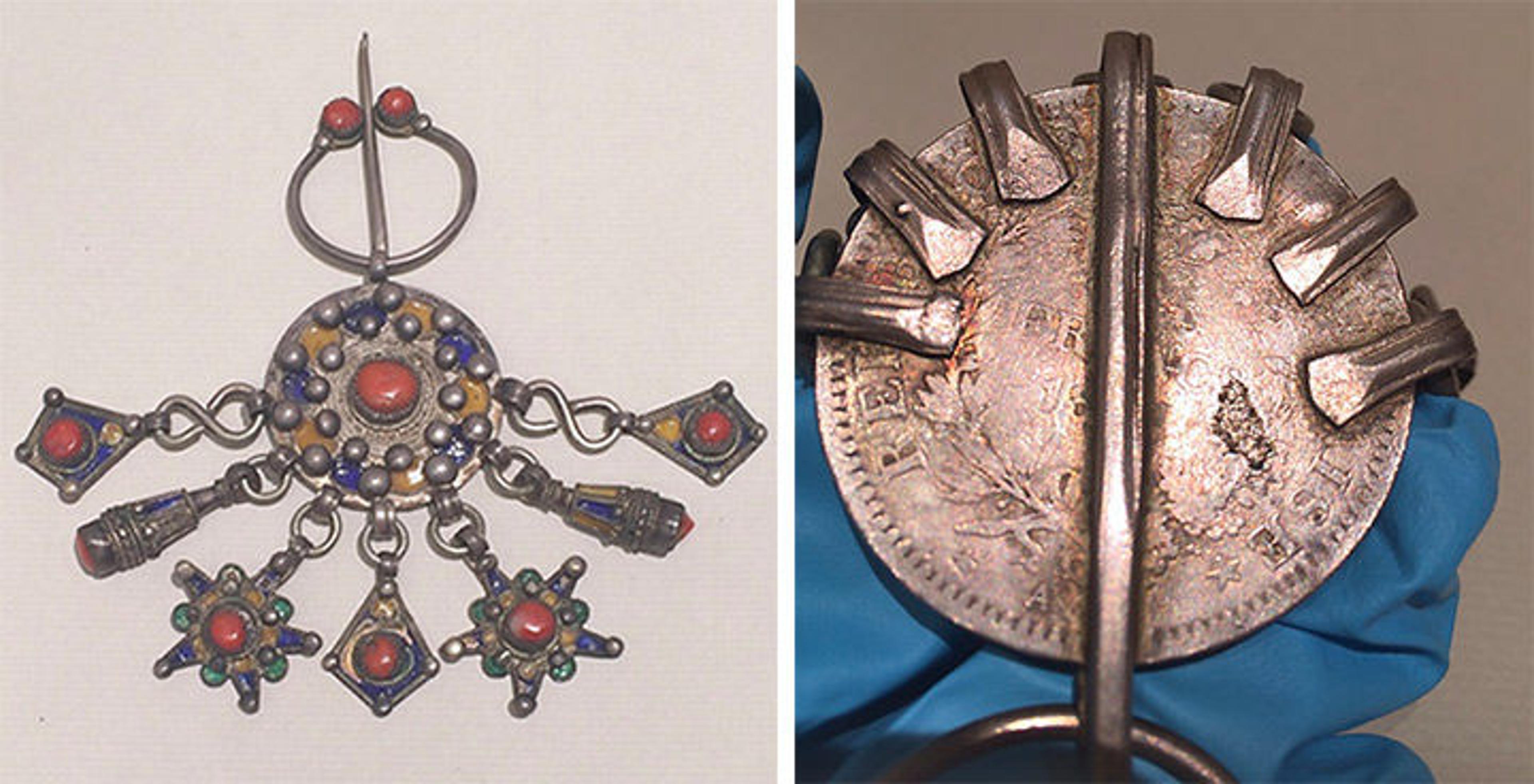
Fibula, first half of 20th century. Attributed to Algeria, Kabylie. Silver, French coin, enamel, coral, 4 7/8 x 2 3/4 x 1/4 in. (12.2 x 7 x 0.6 cm). The Metropolitan Museum of Art, New York, Bequest of Helen Winslow Durkee Mileham, 1954 (55.111.42)
In examining a very different Algerian fibula, also from the Kabylie region, I was surprised to discover that the main circular component is actually a 19th-century French franc! The front side had been completely covered in enamel and large-scale granulation, but the verso clearly reads "Republique Francaise" and has the markings of French currency. Perhaps this coin was repurposed once it had gone out of circulation. Coins in Berber jewelry are not unusual, but more often than not they are Moroccan or Algerian currency rather than French.
Jewelry from the urban areas of Morocco and Algeria resembles Berber jewelry but is typically made in gold rather than silver.
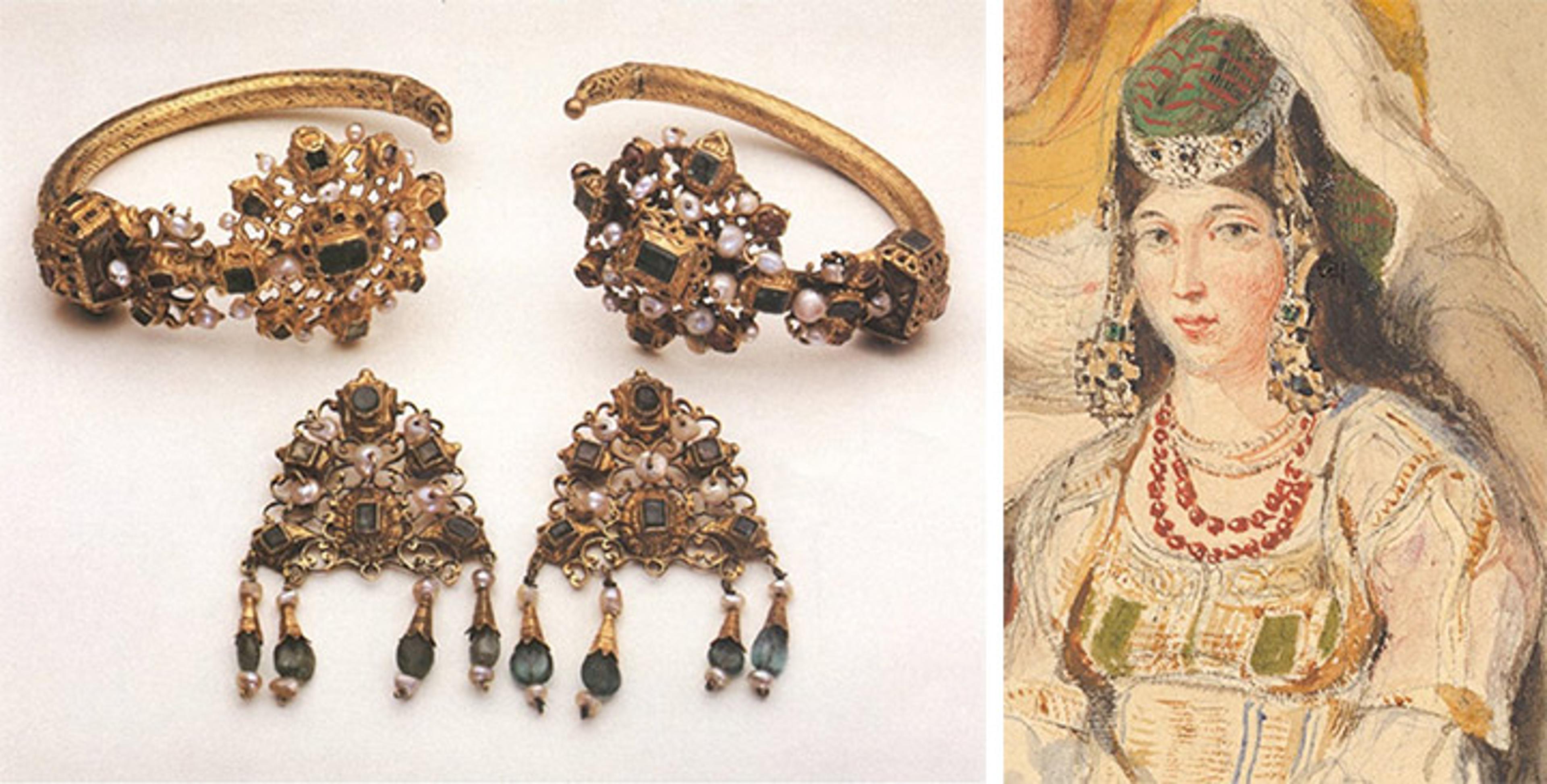
Left: Gold head ornaments, 18th–20th century. Morocco. Gold, rubies, emeralds, green beryl, topaz, glass, and pearls. The Metropolitan Museum of Art, New York, Gift of Dr. Charles A. Poindexter, 1965 (65.265.1, 65.265.2, 65.265.6, 65.265.7). Right: Eugène Delacroix (French, 1798–1863). Saada, the Wife of Abraham Ben-Chimol, and Préciada, One of Their Daughters (detail), 1832. Watercolor over graphite on wove paper, 8 3/4 x 6 3/8 in. (22.2 x 16.2 cm). The Metropolitan Museum of Art, New York, Bequest of Walter C. Baker, 1971 (1972.118.210)
The Met collection includes a gorgeous pair of gold ear ornaments referred to as khoras kbach ("ram's horns") or khoras amara ("very ornate rings"). Like the silver tikhrazin discussed earlier, these khoras were suspended alongside the ear from a chain that was attached to another ornate jewel that was itself affixed to a diadem or a headscarf. Jewelry of this type was created in the cities of Fes, Tetouan, and Tangiers, and is illustrated in several 19th-century paintings depicting Moroccan Jewish weddings, such as the watercolor by Delacroix above.[1]
Since Delacroix did not have access to the women's quarters of Muslim households, his paintings document the presence of this type of jewelry in Jewish contexts, where it was also in vogue. In fact, it is likely that many pieces of Berber-style jewelry were actually made by Jewish metalsmiths and jewelers, and sold to various patrons.
How did these fascinating tribal pieces make their way from North Africa into the collection of The Met in New York? As is the case with many of our objects, these pieces were collected by individuals with spectacular taste and foresight.
After Algeria became a French colony in the late 19th century and Morocco became a French protectorate in 1912, Europeans and Americans were able to travel to North Africa more easily, and the region became an appealing destination for the so-called Orientalist painters, who were drawn to its unfamiliar landscape, light, and culture. The huge fibulae were a gift from Marguerite McBey (1905–1992), an American artist married to the painter James McBey (Scottish, 1883–1959). Avid travelers, the couple particularly loved Morocco, where they bought a home and spent much of their time. Many of James McBey's etchings in The Met collection depict scenes of daily life in Tangiers, Tetouan, and Marrakesh; and it was likely in one of these centers that Marguerite purchased the remarkable fibulae and the roughly 20 other Moroccan jewels that she gave to The Met.
The silver ear ornaments and other fibulae shown above were part of the bequest of another American painter, Helen Winslow Durkee Mileham (1880–1954). Well-known for her artwork, some of which is in The Met collection today, the artist was also a prolific collector who graciously gave almost 50 Berber jewels to The Met, as well as works of Chinese porcelain and miniature French portraits. Little is known about the time that she spent in North Africa acquiring these wonderful pieces of jewelry, but I intend to keep investigating.
The best-known legacy of cardiologist Dr. Charles Aden Poindexter (1904–1981) may be a named professorship in the Department of Medicine at New York University, but his gifts to The Met also reveal a discerning taste in North African garments and early American furniture. These collectors made contributions of lasting importance to the collection, and we have them to thank for acquiring these wonderful Berber jewels and gifting them to The Met for future study and display.
[1] Thanks to Beth Wees, Ruth Bigelow Wriston Curator of American Decorative Arts in the American Wing, for pointing this out.
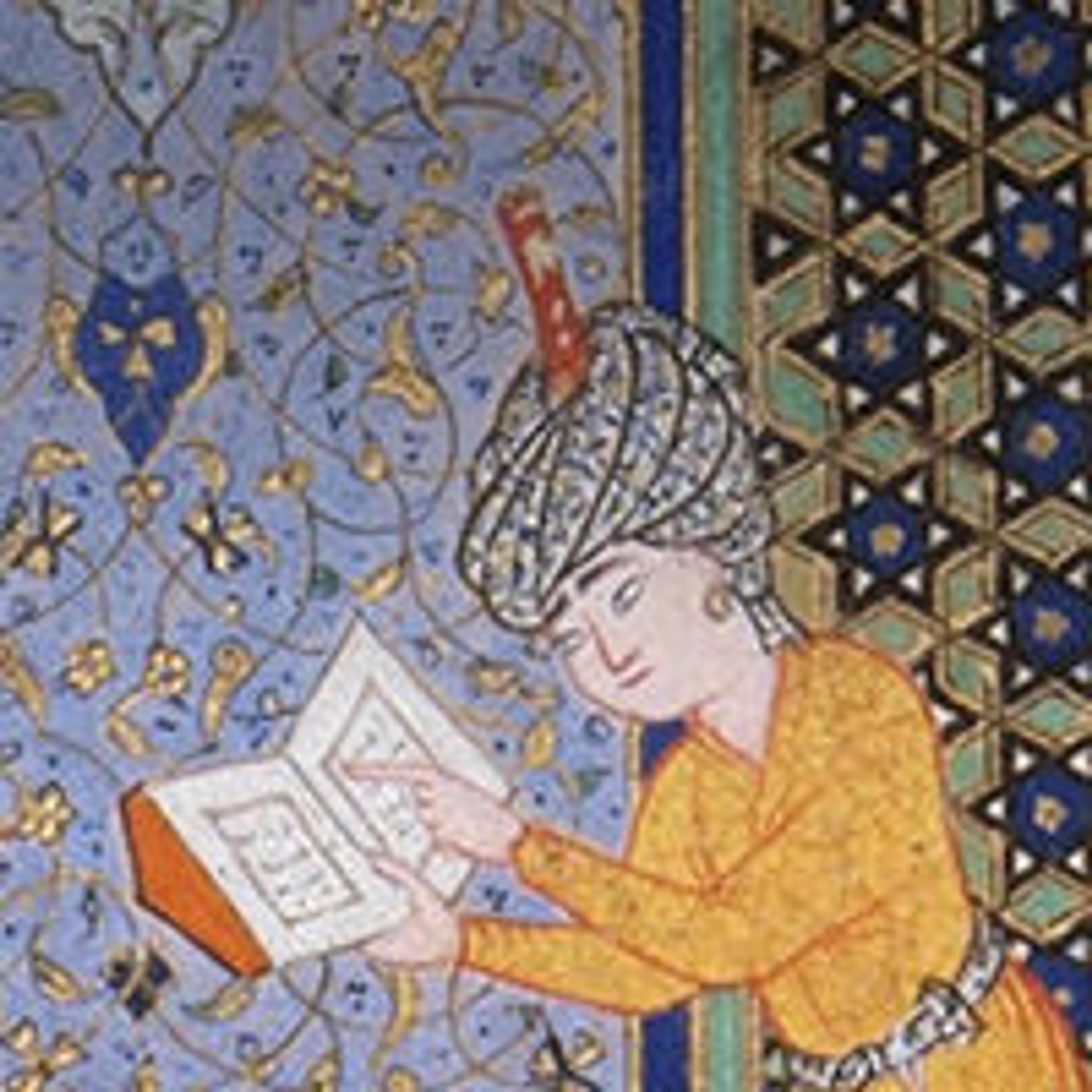
Curators and guest authors share their perspective on works of Islamic art from the collection, the rich history of Islamic art at The Met, and the department's many programs.
Courtney Stewart
Courtney A. Stewart is the senior research assistant in the Department of Islamic Art.